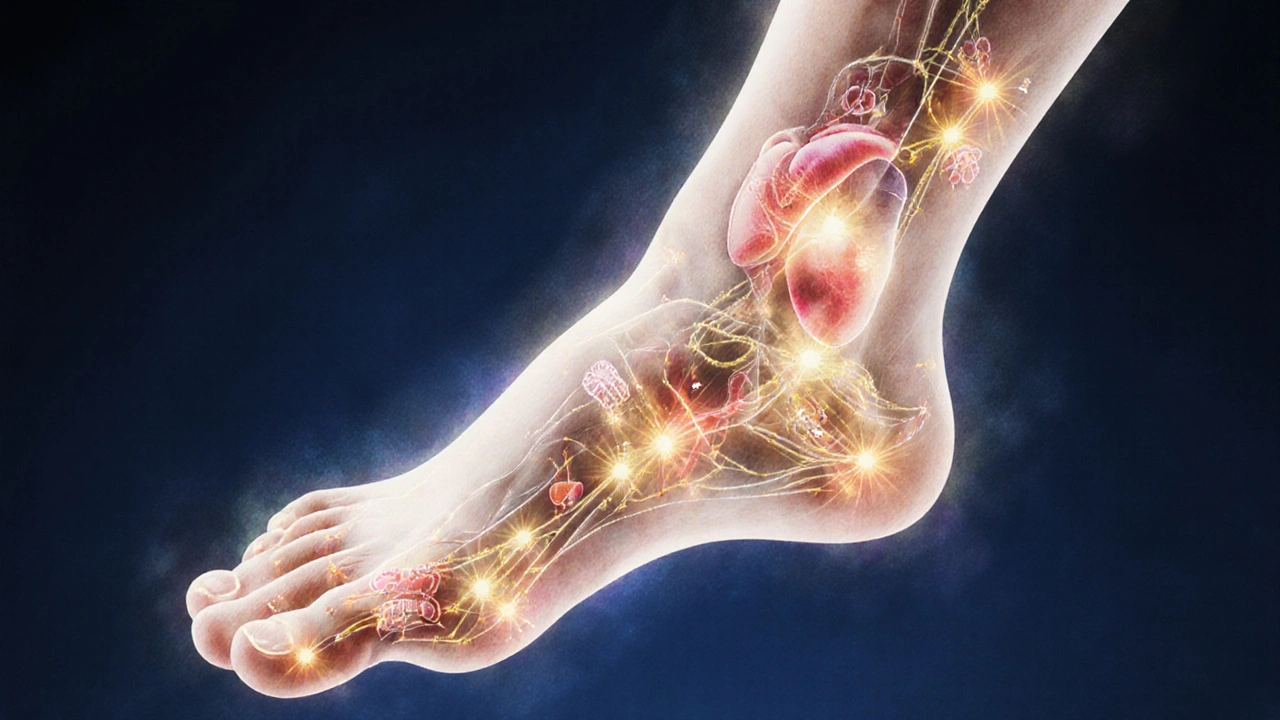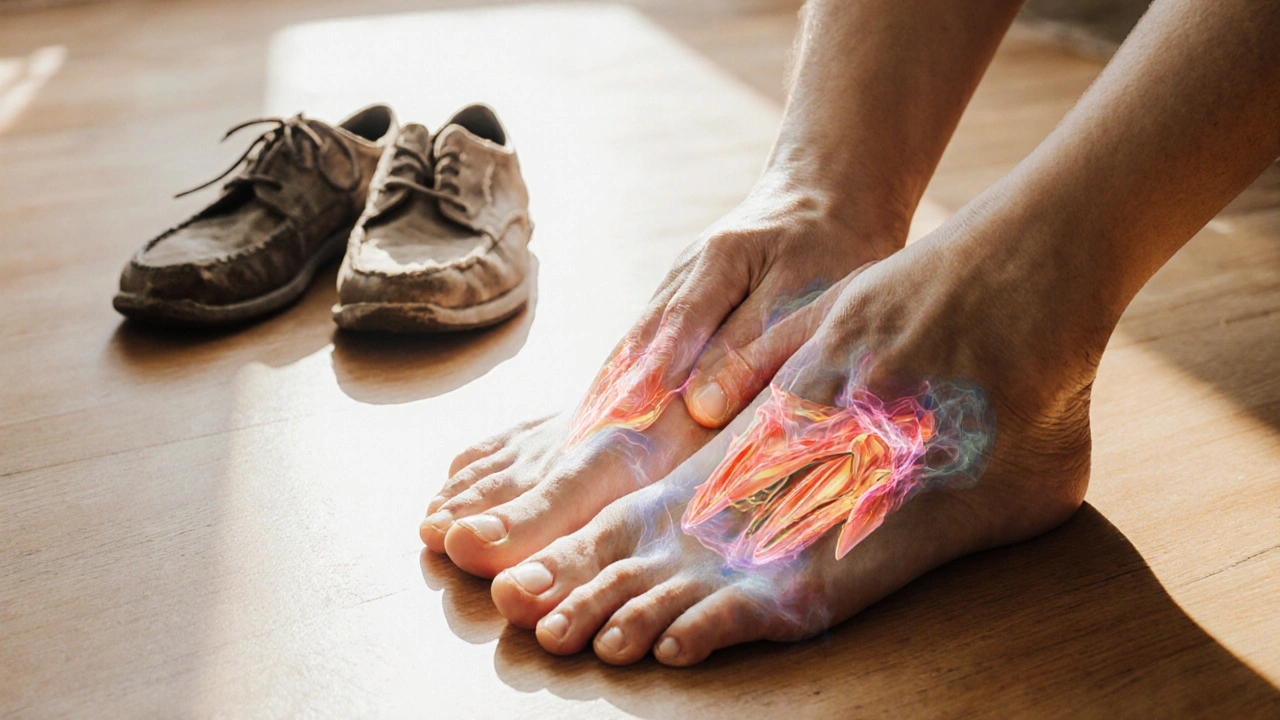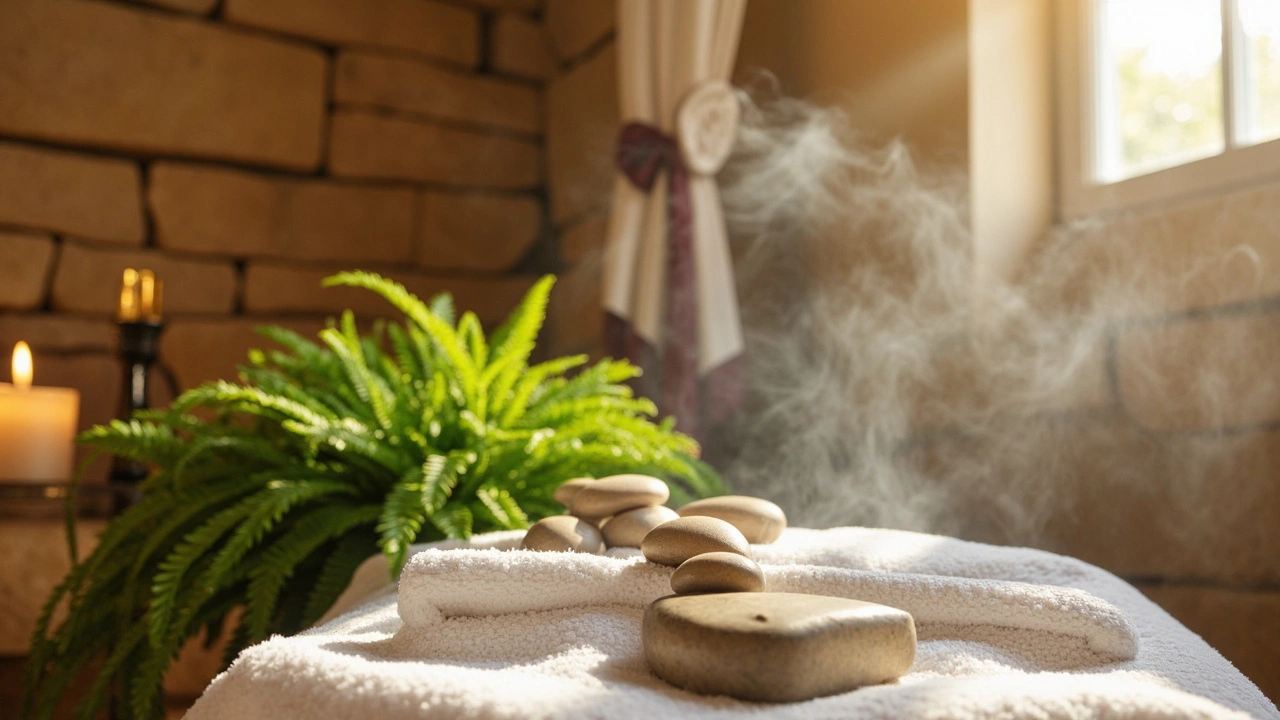How Foot Massage Can Transform Your Health

Most people think foot massage is just a luxury - something you get after a long day at work or as a treat during a spa day. But what if your feet are actually the key to better sleep, less pain, and even improved digestion? The truth is, regular foot massage isn’t just relaxing. It’s one of the most underused tools for everyday health.
Your Feet Are Connected to Everything
Your feet have over 7,000 nerve endings. That’s more than any other part of your body. These nerves connect directly to your brain, spine, and internal organs. That’s why pressing on specific spots on your soles can affect your stomach, lungs, heart, and even your bladder. This isn’t magic - it’s reflexology, a practice backed by centuries of use and growing scientific interest.
A 2021 study in the Journal of Alternative and Complementary Medicine found that participants who received daily 15-minute foot massages for four weeks reported a 30% drop in stress hormones and noticeable improvements in sleep quality. No pills. No machines. Just hands working on the soles of the feet.
Boosts Circulation and Reduces Swelling
If you stand all day, sit for hours, or have swollen ankles, foot massage isn’t just comforting - it’s corrective. The pressure from massage helps move stagnant blood and lymph fluid back toward your heart. This reduces swelling, eases heaviness in the legs, and lowers the risk of blood clots.
People with diabetes often suffer from poor circulation in their lower limbs. A 2020 clinical trial at the University of Bristol showed that diabetic patients who received twice-weekly foot massages for 12 weeks had a 22% increase in blood flow to their feet compared to the control group. That’s not just comfort - it’s prevention.
Relieves Chronic Pain Without Drugs
Headaches, lower back pain, knee pain - all of these can be linked to tension in your feet. When your arches are tight or your toes are curled from years of wearing tight shoes, your whole posture shifts. Your hips tilt. Your spine curves. Your shoulders hunch.
Foot massage loosens those tight muscles and resets your body’s alignment. One woman in her late 50s from Bristol started massaging her feet for 10 minutes every night after her chronic lower back pain didn’t respond to physiotherapy. Within six weeks, she stopped taking painkillers. Her doctor called it "remarkable," but she knew the truth: her feet had been holding the strain all along.

Calms the Nervous System and Improves Sleep
Stress doesn’t just live in your mind. It lives in your muscles, your breath, and yes - your feet. When you’re anxious, your feet tense up. That tension sends signals back to your brain: "Danger. Stay alert. Don’t relax."
Foot massage flips that switch. Gentle pressure on the ball of the foot activates the parasympathetic nervous system - the part of your body that says, "It’s safe to rest." That’s why so many people fall asleep during or right after a foot massage.
Try this: before bed, rub the center of each sole for two minutes with your thumb. Use slow, circular motions. Don’t press hard - just enough to feel warmth. Do this for a week. Most people report falling asleep faster and waking up less often.
Supports Digestion and Detox
There’s a reflex point on the inner edge of your left foot, just below the arch, that connects to your colon. Another spot near the heel links to your liver. Massaging these areas doesn’t magically flush toxins - but it does stimulate the organs to work more efficiently.
People who struggle with bloating, constipation, or sluggish digestion often see improvement after consistent foot massage. One man in his early 40s, who had been on laxatives for years, started massaging his feet daily for 10 minutes. After three weeks, he stopped needing them. His doctor didn’t explain it - but he didn’t argue either.
Easy Ways to Do It Yourself
You don’t need a spa or a professional to get the benefits. Here’s how to start today:
- Find a quiet spot. Sit in a chair with your feet flat on the floor.
- Roll a tennis ball or a smooth wooden roller under each foot for 2 minutes. Apply light pressure - let your body weight do the work.
- Use your thumbs to press and hold each toe for 10 seconds. Then gently pull each toe one at a time.
- Massage the arch with your knuckles in slow circles.
- Finish by rubbing the heel in small circles for 30 seconds.
Do this for 10 minutes a day. No oils, no tools, no cost. Just your hands and 10 minutes.

When to Skip Foot Massage
It’s safe for most people. But avoid it if:
- You have an open wound, infection, or severe bruising on your foot
- You’re in the first trimester of pregnancy (some reflex points may stimulate contractions)
- You have deep vein thrombosis (DVT) or a blood clotting disorder
- Your doctor has advised against pressure on your feet due to nerve damage
If you’re unsure, talk to your GP. But for most people, foot massage is as safe as stretching or walking.
Why This Works - And Why Most People Ignore It
We live in a world that rewards quick fixes: pills, gadgets, apps. Foot massage doesn’t promise instant results. It doesn’t come with a branded logo or a viral TikTok trend. But it’s free, it’s natural, and it works - if you stick with it.
The real transformation isn’t in the massage itself. It’s in the habit. Making time for your feet means making time for yourself. It’s a daily reminder that your body isn’t just a machine to be pushed. It’s a system that needs care - starting from the ground up.
Can foot massage help with plantar fasciitis?
Yes. Plantar fasciitis is caused by tightness and inflammation in the tissue along the bottom of the foot. Regular massage helps release that tension, improves blood flow to the area, and reduces morning pain. Use a foam roller or tennis ball under your foot for 5-10 minutes daily. Combine it with calf stretches for best results.
How often should I get a foot massage?
For general health, 3-5 times a week for 10 minutes is ideal. If you’re dealing with pain, stress, or poor circulation, daily sessions for 2-4 weeks can create noticeable change. After that, maintain with 3-4 times a week. Professional massages once a month can help deepen the effect.
Do I need special oils or tools?
No. Plain hands work better than expensive gadgets. A tennis ball, wooden roller, or even a water bottle can help. If you like the feeling of glide, use a little coconut or almond oil - but it’s not required. The pressure matters more than the product.
Can foot massage help with anxiety?
Absolutely. The feet are rich in nerve endings tied to the vagus nerve, which controls your body’s relaxation response. Massaging them signals safety to your brain, lowering cortisol and heart rate. Many people report feeling calmer within minutes - even during a stressful workday.
Is foot massage the same as reflexology?
Reflexology is a specific type of foot massage based on mapping pressure points to organs. General foot massage focuses on relaxation and muscle release. You don’t need to know the points to benefit - but if you want to target specific areas (like digestion or sleep), learning the reflex zones can add extra value.
Start Small. Feel the Difference.
You don’t need to book a spa package or buy a foot massager. Just take ten minutes tonight. Sit down. Take off your shoes. Use your thumbs. Press. Circle. Breathe.
Your feet carry you every day. Maybe it’s time they carried you toward better health, too.



